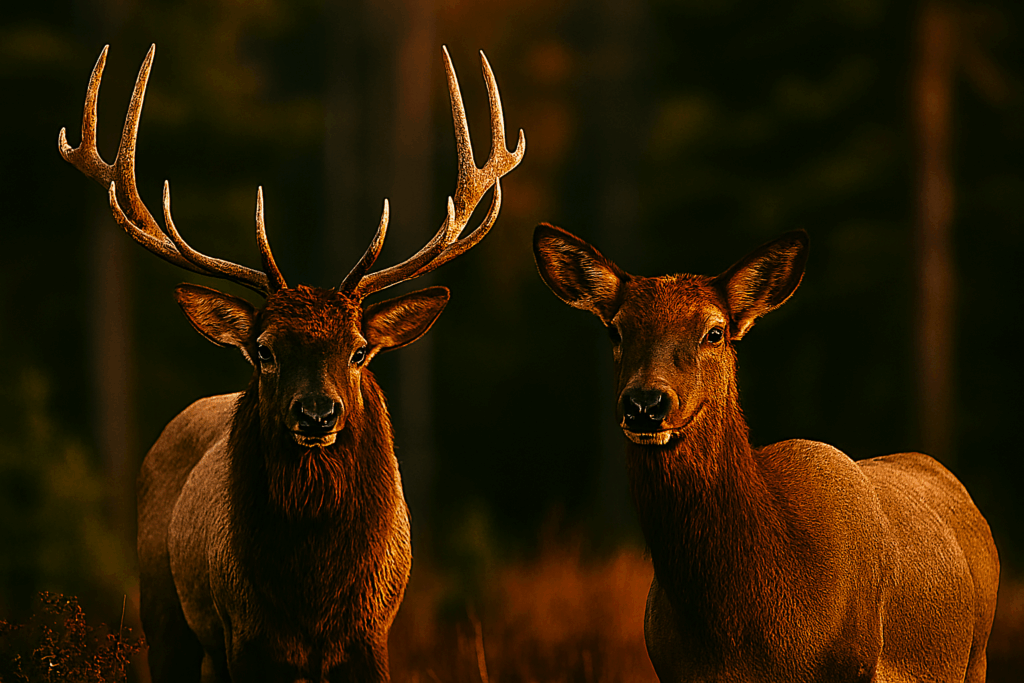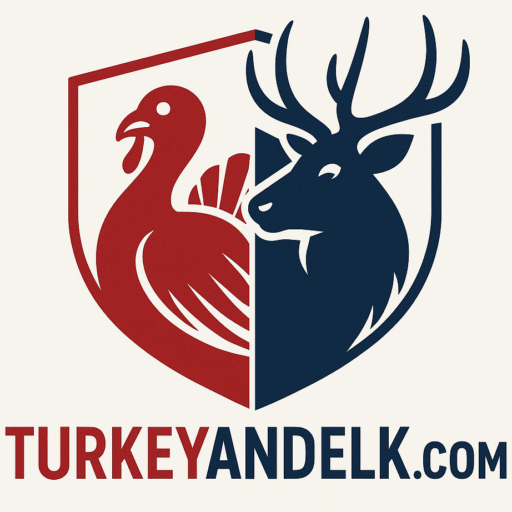Manitoba Elk Hunting Tips
Manitoban elk (Cervus canadensis manitobensis) are among North America’s premier big game species, prized for their massive bodies, thunderous bugles, and the pulse-pounding challenge they present on the southern Canadian Prairies. This guide covers everything self-reliant hunters need to know—without suggesting outfitters—across ten critical topics.

Biology and Physical Characteristics
Manitoban elk are one of the largest elk subspecies, rivaling Rocky Mountain elk in weight and stature. Adult bulls commonly weigh between 700 and 1,000 pounds, with exceptional individuals exceeding 1,000 pounds. Cows average 500–600 pounds. Bulls grow antlers with up to six tines per beam during prime years; typical non-typical spreads reach 5–6 feet wide on mature animals, though genetics and nutrition influence exact dimensions.
Coat coloration shifts seasonally: a thick, dark brown winter coat with lighter rump patches transitions in summer to tawny bronze hair on the body, contrasting with the pale gray neck manes of mature bulls. Bulls in the rut develop heavy neck muscles and exhibit darkened hair along the crest. Calves are born spotted and quickly lose their spots by late summer.
Manitoban elk exhibit sexual dimorphism beyond size and antlers: mature bulls possess a pronounced neck crest and a European-style mane, while cows remain sleek and lack antlers. Understanding these physical markers aids hunters in correctly identifying sex and age classes during the draw period.
Habitat and Geographic Range
Historically found across central Manitoba’s parkland and transition zone between boreal forest and prairie, elk now occupy three primary regions: the Duck Mountains and Riding Mountain National Park in western Manitoba, the Turtle Mountains and Pembina Hills near the U.S. border, and the Interlake region between Lake Manitoba and Lake Winnipeg.
Preferred habitats include:
- Aspen Parklands with mixed aspen and poplar stands interspersed with native grass meadows, providing forage and cover.
- Riparian corridors along rivers and creeks offering lush green browse in summer and thermal relief in winter.
- Agricultural field edges adjacent to shelterbelts, where elk forage on standing corn stubble, cereal grains, and new growth grasses after harvest.
Elk movements are largely non-migratory but seasonal: bulls establish rutting ranges in late August, focusing activity in meadows and clearings; post-rut, elk move toward denser conifer stands for winter cover. Snow depths exceeding 20 inches can drive elk into lower-elevation farm fields where refuge from deep snow and access to waste grain aid survival.
Behavior and Hunting Challenges
Elk hunting in Manitoba demands adaptability to bull behavior across the rut and into the late season. During the rut (late August–early September), bulls trade bugles and engage in sparring matches at dawn and dusk, making mornings and evenings prime calling windows. Their litters of bugles echo across valleys, but the dense aspens and rolling hills can muffle sound, requiring hunters to learn bull vocal nuances.
After the rut, elk disperse into mixed woodlands and agricultural areas. They become food-driven, feeding mid-day in field edges and bedding in conifer stands to avoid deep snow and predators. Limited daylight levels in November and December compress feeding and travel periods into narrow time windows.
Hunting challenges include:
- Variable calling responses: bulls may bugle aggressively early in the rut, then quickly “lock down” and stop bugling after competitors disperse.
- Terrain: rolling hills and dense aspens complicate glassing and stalk approaches, demanding close-range encounters.
- Pressure: draw hunts concentrate hunters in limited Game Hunting Areas (GHAs), making elk wary of human scent and movement on popular trails.
Successful hunters adjust tactics daily, using topographic ridges for bugle contests and midday field-edge ambushes when bulls break silence to feed.
Hunting Strategies and Techniques
Effective Manitoba elk hunting employs a multi-faceted approach:
- E-Scouting and Road Reconnaissance
Use the iHunter app or similar to overlay land-ownership and terrain. Identify likely rutting areas—open meadows surrounded by aspens—and plan road-scouting routes at dawn to observe bull locations and tracks. - Glass and Bugle
Station on ridge lines before first light with binoculars and spotting scope. Call with short, loud bulls’ calls or elk bugle diaphragm calls to provoke responses and locate bulls by sound and reflection off draws. - Decisive Approaches
After locating a bull’s approximate position, close the distance quickly and quietly downwind. Use natural cover; limit calling as you near 200 yards to avoid alerting bulls to unnatural bugle cadence. - Field-Edge Ambush
Post-rut and late season, stalk or set up along field edges near shelterbelts. Bulls feed heavy on agricultural residues; Position decoys only in early rut. Late season, rely on still-hunts and spot-and-stalk along game trails revealed during scouting. - Midday Feeding Tactics
In November and December, bulls feed vigorously in midday if weather is mild. Hunt high-probability fields from elevated positions to spot feeding elk and set up for rapid approach before they bed.
Adapting calling style—aggressive rut bugles early, then soft cow calls later in the season—keeps elk engaged through different phases of the season.
Public Land Locations and Access
Manitoba’s public land consists of Crown land interspersed among GHAs. Key public-land elk opportunities include:
- Riding Mountain National Park: Draw-only archery and rifle tags; mature aspens and grassy benches create classic elk habitat.
- Duck Mountain Provincial Forest: Mix of public Crown land and licensed timber zones; road access allows pre-season scouting but requires careful navigation to avoid private parcels.
- Pembina Hills and Turtle Mountains: Smaller public parcels and WMAs provide draw-only hunts in rugged escarpment terrain.
Most public access requires resident draw licenses. Nonresident elk hunts are not permitted; Manitoba elk hunts are restricted to Manitoba residents via annual big game draw. Success hinges on drawing tags in less-pressed GHAs and committing to pre-season scouting of remote Crown sections.
Season Information and Regulations
Manitoban elk seasons are governed by draw and vary by GHA and weapon type, as per M.R. 30/2025 regulations.
- Resident Draw Archery Licence (Aug 25–Sept 14) in GHAs 13, 18A, 19, 20, 21, 28, 29, 30: bag limit one elk.
- Resident Draw General Licence (Sept 29–Oct 12 & Dec 15–Dec 21) in GHAs 13–21: one male elk.
- Landowner Draw Licences: antlerless elk only in select GHAs from Dec 1–Dec 14.
- Western GHAs (23, 23A) allow elk or moose harvest during extended seasons, but elk are limited to one per licence period.
Hunting hours begin one-half hour before sunrise until sunset. Shotguns, muzzleloaders, rifles (during general rifle draw), and archery equipment must comply with provincial regulations (rifles restricted to designated general seasons). All hunters must report harvests within 48 hours via the online licensing portal.
Trophy Considerations and Record Keeping
Manitoban elk bulls produce impressive trophy heads, with antler spreads averaging 5–6 feet and typical green scores exceeding 350 inches on mature bulls. Trophy quality depends on:
- Age: Bulls 6–10 years old exhibit full antler development; younger bulls have smaller tines and lighter mass.
- Nutrition: Elk feeding in agricultural edges late in summer develop thicker beams and heavier mass.
- Genetics: Ungulate herds in the Duck Mountains and Pembina Hills often yield record-class bulls.
For NWTF or Boone & Crockett scoring, measure inside spread, beam lengths, tine lengths, mass, and circumference. Photograph antlers with measuring tape and record weight at field dressing for comprehensive records.
Conservation and Population Status
Manitoban elk nearly vanished by the early 1900s due to overhunting and habitat loss. The Manitoba Elk Restoration Program in the 1970s and ’80s successfully reintroduced elk into Riding and Duck Mountains. Current estimates exceed 15,000 elk province-wide, with stable populations in GHAs 13–23, 28–30.
Conservation efforts focus on:
- Habitat restoration: Maintaining aspen parkland and protecting riparian corridors.
- Adaptive harvest: Draw-based licences prevent overharvest and concentrate effort.
- Research: GPS-telemetry studies track seasonal movements and inform GHA boundaries.
Challenges include agricultural expansion, road development fragmenting winter range, and climate variability affecting forage availability. Hunters support habitat projects through licence fees, ensuring sustainable populations.
Tips for First-Time Hunters
- Apply Early and Strategically: Enter multiple GHAs in the draw to maximize tag odds. Prioritize GHAs with lower hunter density if you seek solitude and higher bull encounter rates.
- Scout Pre-Season Thoroughly: Use aerial imagery and boots-on-the-ground scouting to locate likely rutting grounds—meadows adjacent to aspens with nearby forest cover.
- Learn Bull Vocalizations: Practice bull calls on diaphragm calls; mature bulls recognize and investigate authentic-sounding challenges more readily than generic bugles.
- Hone Glassing Skills: Carry a spotting scope; elk often bed in shaded aspens midday, making binocular-only observation inadequate for detecting subtle antler racks.
- Physical Preparation: Mountain-style hikes are uncommon, but stalking across rolling terrain with heavy packs demands conditioning. Practice long walks with loaded packs across uneven ground.
- Dress for Rapid Weather Changes: Even in September, mornings can be cool and afternoons hot. Layering and rainproof outerwear keep you comfortable and focused on the hunt.
- Pack Essentials: Bring extra water, high-calorie snacks, GPS or paper maps, first-aid kit, and a lightweight ground blind for midday sits.
- Safety: Define shooting lanes, wear hunter orange when relocating, and always identify target beyond any brush to ensure safe shots.
Manitoban elk hunting combines trophy potential with the drama of wide-open spaces and the thrill of the rut. Master these fundamentals, and you’ll be ready to conquer Manitoba’s regal wapiti on your own terms.
